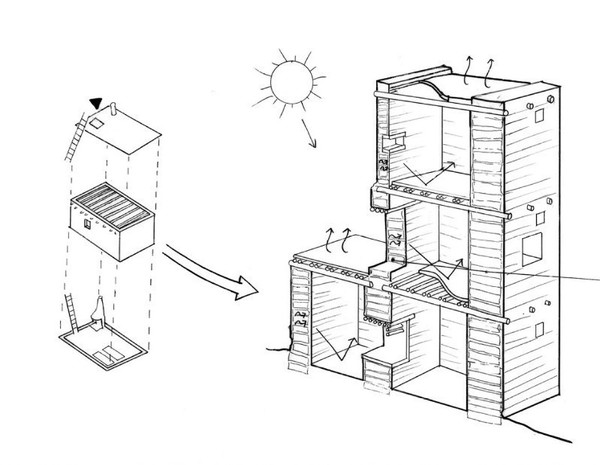Building Materials and Methods in Charleston, South Carolina in Light of Climate Change
- Student
- Alexandria Gordon
- College(s)
- School of Architecture
- Faculty Advisor
- Samantha Salden-Teach
- Class Year
- 2018
 The pueblo form, designed for hot climates, is essentially comprised of the stacking of smaller rectangular units, allowing the rooms deeper in the configuration to be cooler
The pueblo form, designed for hot climates, is essentially comprised of the stacking of smaller rectangular units, allowing the rooms deeper in the configuration to be cooler
Many cities now are experiencing drastic climate changes as a result of global warming. Therefore, the question must be asked, “How are the current methods and materials going to respond to this future climate? Will these need to change now, and if so, how?”
In Charleston SC, the distinct single side yard house type that was originally designed purposefully for its climate. In addition, Charleston has a distinct architectural language it hopes to maintain. Not only it is a beautiful architecture, but it now provides for their tourist sector. Therefore, in keeping with this architecture, Charleston will become more economically resilient.
My capstone addresses literature on climatic design strategies and the past and predicted climate of Charleston. My project helps to illustrate which materials and processes will be the best approach to new, durable construction, allowing Charleston’s rich heritage to be preserved and expanded upon for centuries to come.
I have found that building in regards to the climate is essential to sustainable design. With a changing climate these strategies need to be revisited and altered to propose the best solutions for the most current climate and to be resilient to future climate predictions. It is important to look at local materials, manufacturing and joinery technologies, passive heating and cooling techniques, ventilation, urban layouts, and more.